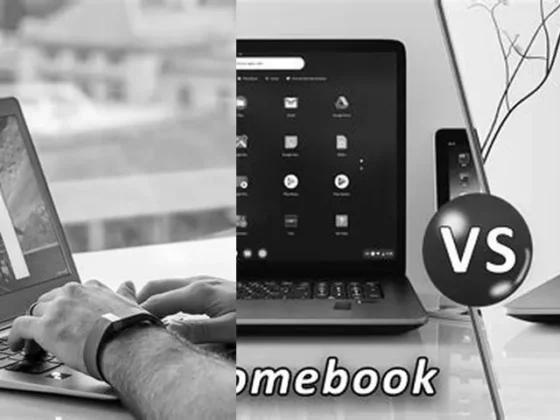What Does an IP Address Look Like? Decoding the Structure, Types, and Applications of IP Addresses: Have you ever wondered what those seemingly random numbers and dots that make up an IP address actually mean? Well, you’re not alone! Understanding the structure of an IP address can feel like deciphering a secret code. But fear not, because in this blog post, we’re going to break it down for you, step by step. Whether you’re a tech enthusiast, a networking professional, or just someone curious about how the internet works, we’ve got you covered. So sit back, relax, and get ready to unravel the mystery behind what an IP address really looks like.
Understanding the Structure of an IP Address
An IP (Internet Protocol) address acts as an identifier for devices on a network. Understanding what an IP address looks like is crucial for anyone delving into the world of networking. Let’s break down the anatomy of an IP address.
The Basics of IP Address Format
Firstly, an IP address is a string of numbers separated by periods. This format is designed to be read and understood by humans. When we dissect the IP address, we find that it is composed of a set of four numbers. Each segment, known as an octet, can have a value ranging from 0 to 255. This range is due to each octet being an 8-bit binary number, and 255 is the highest value that can be represented by such a number.
IP Address in Dotted-Decimal Notation
The most commonly seen format of an IP address is the dotted-decimal notation. This notation is intuitive and simplifies the process of identifying and remembering addresses. For instance, the IP address 192.158.1.38 is an example of an IPv4 address in this notation. Each of the four octets is converted from binary to decimal and then separated by a period.
IPv4 vs. IPv6 Address Formats
While IPv4 addresses are displayed as 192.0.2.1, the advent of IPv6 addresses has introduced a new format to accommodate the exponential growth of the Internet. An IPv6 address, such as 2001:db8:0:1234:0:567:8:1, may look intimidating at first glance, but it follows a logical structure using hexadecimal values separated by colons.
Decoding IPv4 Addresses
Range and Representation of IPv4 Addresses
Every number in an IPv4 address can be any decimal value from 0 to 255. This range allows for over 4 billion unique addresses, which seemed sufficient in the early days of the Internet. The representation in human-readable format makes it easier for network administrators and users to work with IP addresses, avoiding the need to deal with the underlying binary code that computers use to process these addresses.
Transitioning to IPv6 Addresses
Why the Shift to IPv6?
The IPv6 format was developed as a result of the exhaustion of IPv4 addresses. IPv6 addresses are considerably longer, consisting of eight groups of four hexadecimal digits. This format can support a virtually limitless number of unique addresses, ensuring the scalability of the Internet for the foreseeable future.
Understanding IPv6 Address Complexity
The complexity of IPv6 addresses can be perplexing. However, they follow a systematic approach that, once understood, becomes less daunting. For example, 2001:db8:0:1234:0:567:8:1 is a valid IPv6 address, displaying groups of hexadecimal numbers that represent a 128-bit address as opposed to the 32-bit address of IPv4.
Interpreting IP Addresses in Networking
How Devices Use IP Addresses
IP addresses are not just static numbers; they serve a dynamic role in networking. Devices use these addresses to communicate with one another within a network or across different networks. The IP address ensures that data packets reach the correct destination. Just as a postal address directs mail to your home, an IP address directs internet traffic to the right device.
The Role of IP Addresses in Internet Connectivity
Whether it’s a website server, a home computer, or a mobile device, all connected devices require an IP address to participate in the network. This is essential for the basic functionality of the Internet, allowing for the accurate routing and delivery of information.
IP Addresses and Internet Security
Protecting Your IP Address
An IP address can reveal information about the location of a device and, by extension, its user. Thus, protecting the visibility of your IP address using techniques like VPNs (Virtual Private Networks) or proxy servers enhances privacy and security online.
IP Addresses in Cybersecurity
In the realm of cybersecurity, IP addresses can be traced back to the originating device in the event of malicious activities. As such, IP addresses play a crucial role in digital forensics and cybersecurity efforts to track and mitigate threats.
Practical Applications of IP Addresses
Networking and Troubleshooting
Understanding IP addresses is invaluable when setting up networks or troubleshooting connectivity issues. Whether you are configuring a router, setting up a home network, or diagnosing network problems, knowing how to read and interpret IP addresses is fundamental.
Configuring Devices and Services
Configuring networked devices often requires entering IP addresses manually. This can include setting up printers, accessing remote services, or specifying DNS servers. Being familiar with IP address formats ensures that these tasks are completed accurately.
Conclusion
IP addresses are the backbone of internet connectivity, and comprehending their structure is essential for navigating the digital world. From IPv4’s dotted-decimal to IPv6’s hexadecimal format, IP addresses have evolved to meet the needs of a growing internet population. By understanding the appearance and function of IP addresses, users can better manage their networked devices and protect their online presence.
Remember that while the concept might seem technical, the practical applications of IP addresses touch on everyday internet use. As technology continues to advance, the role of IP addresses will only become more critical in connecting the world.
FAQ & Related Questions about What Does A IP Address Look Like?
Q: What does an IP address look like?
A: An IP address is a string of numbers separated by periods, such as 192.158.1.38.
Q: How are IP addresses displayed?
A: IP addresses are written and displayed in human-readable notations, such as 192.0.2.1 in IPv4 and 2001:db8:0:1234:0:567:8:1 in IPv6.
Q: What are the four parts of an IP address called?
A: The four parts of an IP address are called octets. They are called octets because in binary form, each octet is composed of 8 digits or 8 bits.
Q: What is the range of numbers in each part of an IP address?
A: Each number in the set can range from 0 to 255.
Q: Can you provide an example of an IP address?
A: An example of an IP address is 192.158.1.38.


